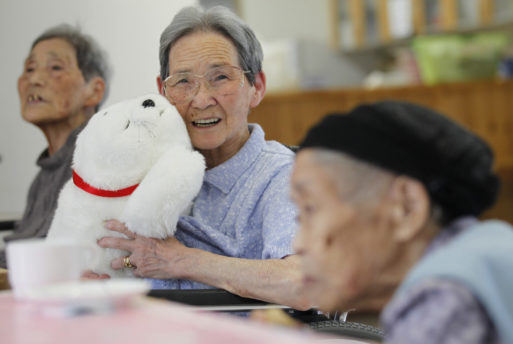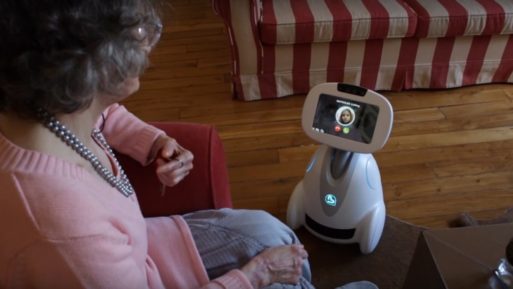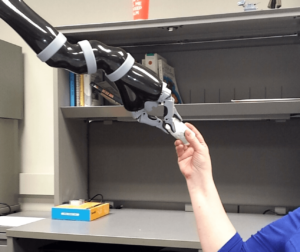The entire world is aging. This isn’t just a fact of life, it’s a matter of statistics. According to a 2017 United Nations report on world population, the number of people over 60 will more than double by 2050. With this change in demographics comes a significant challenge — more and more of our populations will be elderly who need caregivers in their golden years.
This is an especially pressing issue as “aging in place” is no longer just a growing trend — it’s become very common for seniors to stay put in their homes at the end of life. This has put more strain on an already undermanned pool of available caregivers. Add to this the hardships faced by friends and family who must fill these gaps in care, and it becomes obvious that this is an issue we’re going to have to address on societal levels.

Credit: Engadget.com
Japan Leads the Way in Aging
Nowhere is this trend more pronounced than Japan, where a quarter of the population is elderly. There is such a shortage of caregivers for the elderly in that country that in 2016 it created a new category of work visas to allow foreign caregivers to work in Japan. But this hasn’t proven to be the answer.
What could be the answer? Robots.
As the auto industry in Japan has seen sales on a continuous down slope for years now, car makers have shifted their focus to the future of robots. Much of the focus on developing robotic technology in Japan has been aimed at creating caregiving robots that can assist the elderly with everything from keeping track of medications to getting sufficient exercise to fending off the loneliness and isolation often experienced by seniors aging in place. And slowly but surely, it seems to be working.
How Caregiving Robots Are Helping Now
Though it may seem like a foreign concept to have robots in the home, robots have been cleaning our floors and mowing our lawns for years now. These machines are designed to perform very specific functions, and systems like these are likely to be the first widely adapted caregiving robots. Far from the old sci-fi image of the robot butler, we’re much more likely to see robots like this one that manages medication and hydration for seniors — areas where problems are likely, but that can be easily managed by technology.

Credit: Bluefrogrobotics.com
In addition to the day-to-day logistics of elder care, one of the biggest problems facing the elderly who choose to age in place is isolation. Unless a person is significantly disabled, he or she usually doesn’t need around-the-clock care from caregivers, which means the elderly in these kinds of situations often spend large chunks of time alone. This can lead to isolation and depression, and even shorter lives.
To address this problem, some companies are focusing their development efforts on companion robots that help see to the social needs of seniors. From the popular Paro (a robotic harp seal that responds to the human voice) to caregiving robots like Buddy, a robot designed to keep seniors in touch with family and friends, the results have so far been quite encouraging. Guinness even named Paro the world’s most therapeutic robot. Not bad for a high-tech stuffed animal.
Why Caregiving Robots?
One might ask the question “Why robots?” After all, most of the tasks currently performed by caregiving robots can easily be accomplished by humans at lower costs. So why choose robots?
- We just don’t have enough people to do the job, and with population trends the way they are, this will only get worse.
- Robots work 24 hours a day. This means they can be there anytime day or night to see to the needs of those aging in place.
- Using technology to perform mundane tasks (like cleaning floors) increases the amount of quality time the elderly spend with their loved ones.
- Using technology isn’t the same as asking someone for help, which allows seniors more perceived autonomy when aging in place.

Credit: Smithsonianmag.com
As Western cultures warm to the idea of robots in our homes and institutions, I believe we’ll see eventual widespread acceptance. One way or another, our aging world population will demand urgent attention from us if we don’t get in front of this shortage of caregivers and prevent it from becoming a crisis. Our love and respect for our elders demands that we do what we can to make life better for everyone – and if a few nuts and bolts make life worth living for the aged among us, we ought to go fearlessly into that future.

 The Role of Caregiving Robots and Our Aging Population
The Role of Caregiving Robots and Our Aging Population


 “As Tears Go By” by Marianne Faithfull
“As Tears Go By” by Marianne Faithfull
 “The Sea” by John Banville
“The Sea” by John Banville
 Funeral Favors Offer Visitors a Tangible Memento
Funeral Favors Offer Visitors a Tangible Memento















